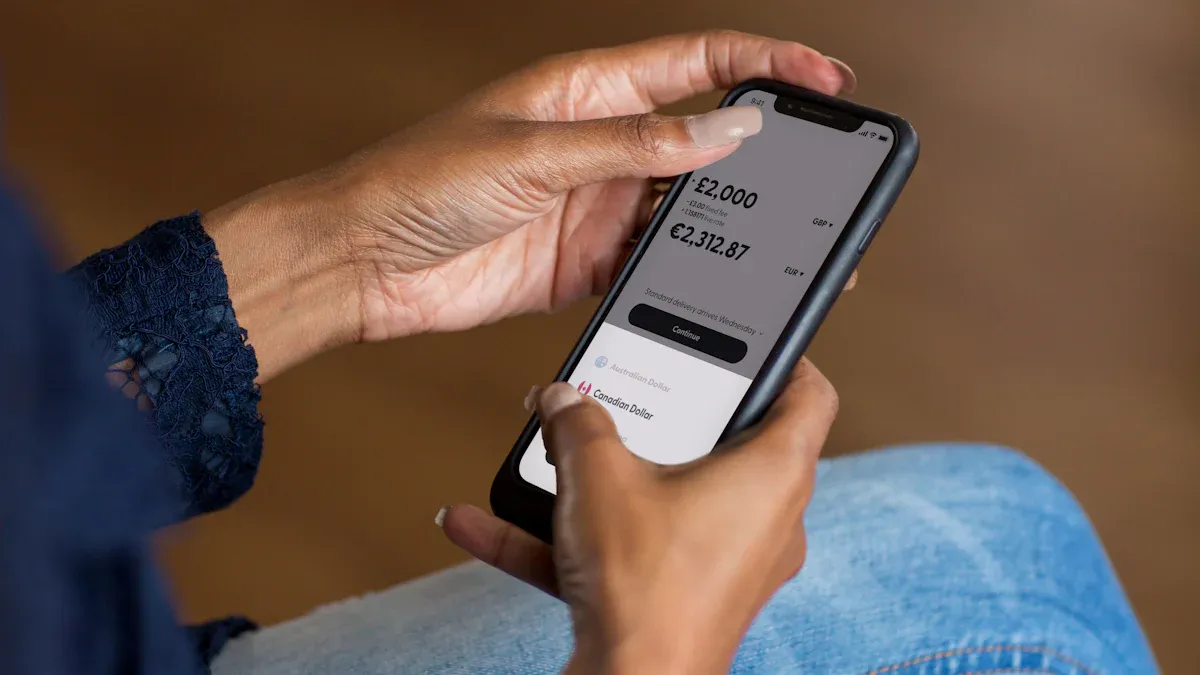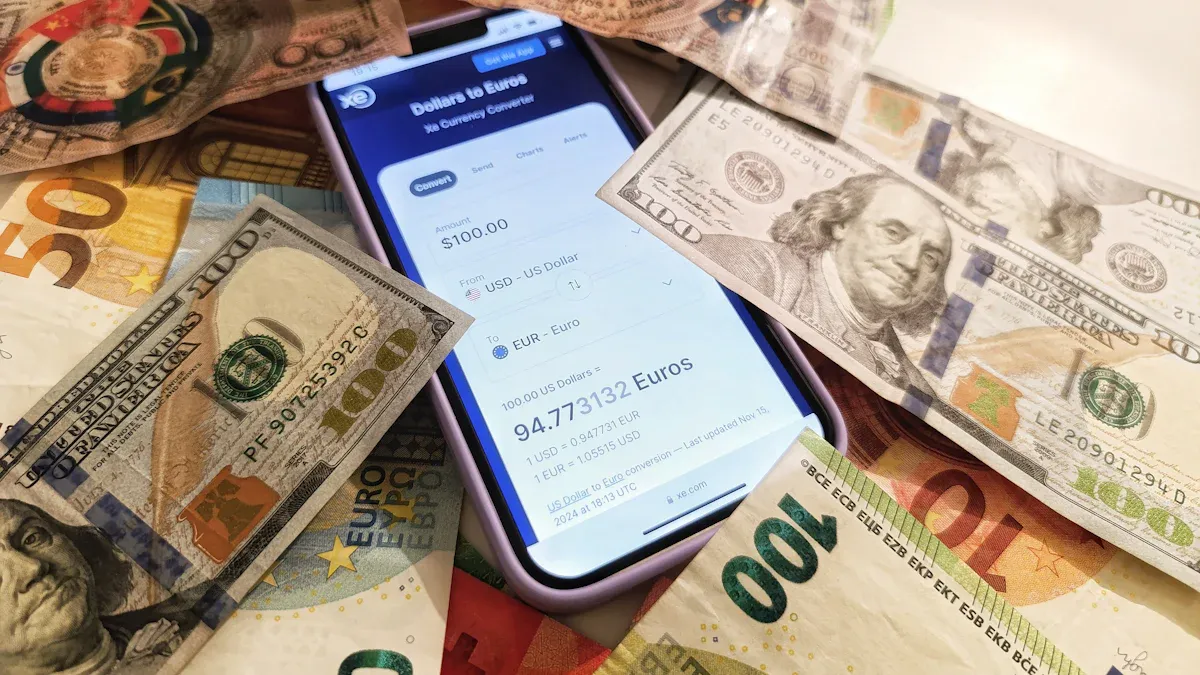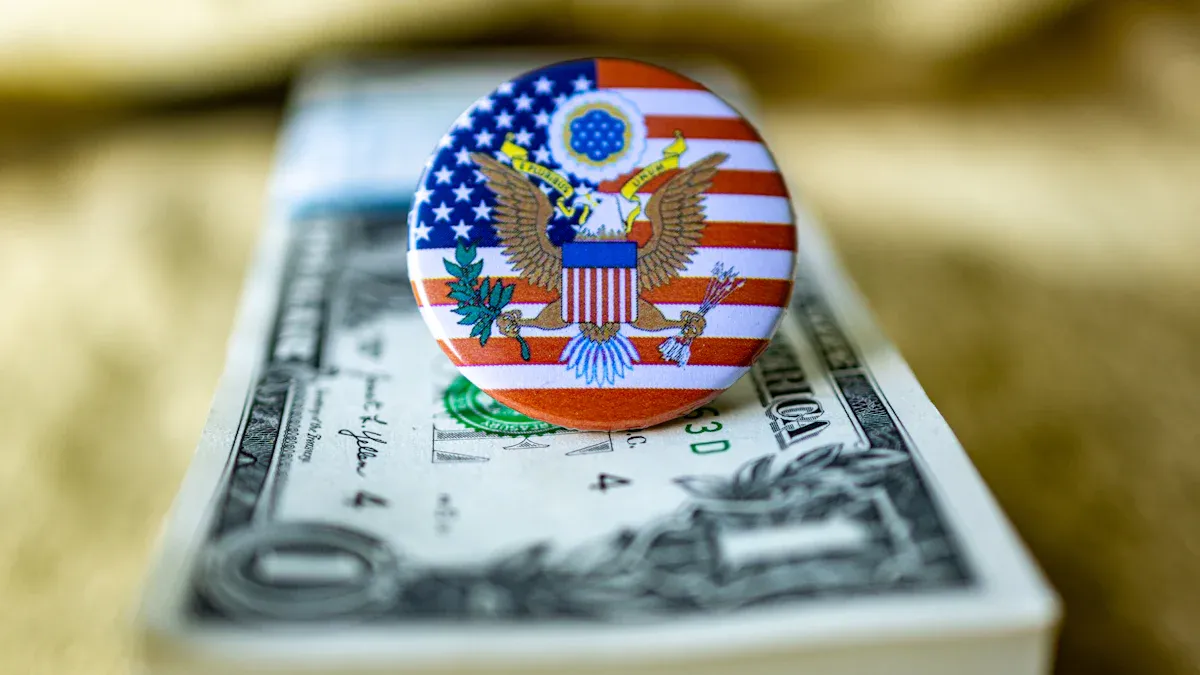- EasyCard
- Trade
- Help
- Announcement
- Academy
- SWIFT Code
- Iban Number
- Referral
- Customer Service
- Blog
- Creator
Remittance Fees and the Best Ways to Transfer Money from the United States to Japan

Image Source: unsplash
Do you want to send money from the US to Japan? Choosing the right service can help you save significant fees and valuable time.
Currently, using online remittance services like Wise and Remitly is usually the most cost-effective and fastest option overall. This is the key first step in finding the best way to send money from the US to Japan.
Key Points
- Online remittance platforms are usually the best choice, as they are cheaper and faster than traditional banks.
- Wise and Remitly are recommended online platforms with transparent fees and fair exchange rates.
- Traditional bank wire transfers have high fees and slow speeds, and are not recommended for everyday remittances.
- PayPal has poor exchange rates and is not suitable for large international remittances.
- Before each remittance, compare the total costs of different platforms in real time to find the most cost-effective method.
US to Japan Remittance: Comparison of Mainstream Methods

Image Source: pexels
To find a cost-effective solution for sending money from the US to Japan, you need to understand the mainstream options available on the market. Each method has its unique fee structure, speed, and applicable scenarios. Below, we will break down and compare them in detail for you.
Online Remittance Platforms
Online remittance platforms are an efficient choice that has emerged in recent years, and they are usually cheaper and faster than traditional banks.
-
Wise (formerly TransferWise) Wise is known for its transparent fee model and real exchange rates. It directly uses the “mid-market exchange rate” that you can find on Google and only charges a small, disclosed service fee. This means you won’t lose money due to exchange rate differences.
Wise emphasizes that, unlike many banks and other providers, they do not add a markup to the exchange rate. The fee you pay is the fee you see, with no hidden costs.
Taking a remittance of 1,000 USD to Japan as an example, the fee structure is very clear:
Item Details Exchange Rate (1 USD) 151.450 JPY (mid-market rate) Transfer Fee 11.67 USD Recipient Finally Receives 149,683 JPY In terms of speed, 64% of Wise transfers can arrive instantly (within 20 seconds), and the vast majority of transfers are completed within 24 hours. However, you need to be aware of Wise’s transfer limits in Japan.
-
Remitly Remitly’s advantage lies in its flexible speed options and promotional offers for new users. It usually offers two services:
- Economy: Fees are lower, but arrival time is slower, usually taking 3-5 business days.
- Express: Fees are slightly higher, but when paying with a debit card, funds can arrive in minutes.
For remittances over 1,000 USD, Remitly often waives the transfer fee. If you are a first-time user, you may also get very attractive promotional exchange rates, making it very competitive for first-time remittances.
-
Western Union As an established remittance company, Western Union’s advantage lies in its vast network of offline outlets and brand recognition. It also offers online transfer services and often launches “0 USD fee” promotions.
However, you need to pay special attention to its exchange rates. Western Union earns revenue through currency conversion, which means the exchange rates it provides usually include a markup, which is a hidden cost. Even if the fee is zero, a poor exchange rate may result in you ultimately paying more. -
Paysend Paysend attracts users with its “zero fee” transfers to bank accounts. For example, sending 1,000 USD from the US to a Japanese bank account may show a fee of 0.00 USD. However, this is usually part of a promotional campaign, such as for new customers or using specific promo codes. For example, using the
10MFAMILYcode can enjoy two fee-free transfers before February 17, 2025.
Traditional Bank Wire Transfers
Conducting an international wire transfer through your US bank (such as Bank of America, Chase, Wells Fargo) is the most traditional method. Its advantages are safety and reliability, but its disadvantages are also very obvious: high fees and slow speeds.
-
High Fees: Bank wire transfers usually include two parts of fees:
- Outgoing Fee: The bank will charge a fixed remittance fee.
- Exchange Rate Markup: The exchange rate provided by the bank is far less favorable than the mid-market exchange rate, and this difference is the bank’s profit and your implicit cost.
The following are reference international outgoing fees for several major US banks:
Bank International Outgoing Fee (Online Operation) Bank of America 35 USD (foreign currency) / 45 USD (USD) Chase 5 USD (foreign currency) / 40 USD (USD) Wells Fargo 0 USD (foreign currency) / 25 USD and up (USD) Please Note: Even if some banks charge lower fees for “foreign currency” remittances, they usually apply a markup of about 3%-5% on the exchange rate, which is a significant loss for large remittances.
-
Slow Speed: Bank wire transfers usually take 2-5 business days to arrive.
-
Complex Information: You need to accurately provide the recipient’s detailed bank information, including bank name, branch code, SWIFT/BIC code, recipient name (usually required in katakana), and account type, etc. Any error may cause the remittance to fail or be delayed.
Digital Wallets (PayPal)
Using PayPal for international transfers is very convenient, especially when both parties have PayPal accounts. However, this convenience comes with extremely high costs. PayPal’s fees are mainly hidden in its extremely poor currency conversion exchange rates.
Let’s take sending 1,000 USD as an example again to see the huge difference between PayPal and other methods:
| Provider | Exchange Rate (1 USD to JPY) | Transfer Fee | Recipient Receives (Sending 1,000 USD) |
|---|---|---|---|
| Mid-Market Rate | 151.450 | 11.67 USD (using Wise as example) | 149,683 JPY |
| PayPal | 144.293 | 4.99 USD | 143,573 JPY (-6,110 JPY) |
As can be seen from the table above, although PayPal’s transfer fee appears low, due to its exchange rate being nearly 5% lower than the mid-market rate, the recipient ultimately receives more than 6,000 JPY less. Therefore, unless it is for very small payments, PayPal is not recommended for international remittances.
Specific Bank Internal Transfers
If you and the recipient both have accounts with the same multinational bank, this may be the lowest-cost remittance method.
Taking Citibank Global Transfers as an example, if you transfer from a Citibank account in the US to a Citibank account in Japan, you can enjoy the following advantages:
- Zero Fees: Transfers between accounts are completely free.
- Instant Arrival: Funds usually arrive instantly or within a few hours.
- High Limits: Depending on your account level, daily transfer limits can range from 50,000 USD to 100,000 USD.
The only limitation of this method is that both the sender and recipient must be customers of the bank. If you meet this condition, this is undoubtedly your best option.
Finding the Best Way to Send Money from the US to Japan

Image Source: unsplash
After understanding the pros and cons of various remittance methods, you might ask: “Which one is the best?” The answer is: there is no one-size-fits-all “best,” but there is a simple method to find the best option at the moment. You only need to follow the two steps below to ensure every penny is well spent.
Step 1: Calculate the Total Cost
Many people only focus on the “low fees” or “zero fees” advertised by service providers when remitting money, but this often overlooks a larger hidden cost: the exchange rate. To truly understand your remittance cost, you need to calculate the total cost.
Total Cost Calculation Formula
Total Cost = Upfront Fee + Exchange Rate Loss
- Upfront Fee: This is the most straightforward fee, the transfer service fee directly charged by the service provider.
- Exchange Rate Loss: This is the most easily overlooked hidden cost. It refers to the difference between the exchange rate provided by the service provider and the real mid-market exchange rate.
The mid-market exchange rate is the “wholesale price” used when banks and large financial institutions trade currencies, and you can check it on independent sources such as Google, Wise, or Xe.com.
| Source | Real-Time Mid-Market Rate (USD/JPY) |
|---|---|
| Wise.com | 151.4 |
| Xe.com | 151.096 |
Data as of the time of writing; please check real-time queries for accuracy.
When a service provider offers an exchange rate lower than this standard, the difference becomes your implicit cost. For example, if the market rate is 1 USD to 151 JPY, but a certain service provider only gives you 145 JPY, then for every 1 USD sent, you lose 6 JPY.
Step 2: Real-Time Comparison Selection
Theoretical calculations may be somewhat complex, but fortunately, there is a simpler and more direct method to find the best option: real-time online comparison.
This may be the most worthwhile three minutes you spend before remitting money. The operation is very simple:
- Open multiple platforms: Open the official websites of several online remittance platforms you are considering, such as Wise and Remitly, in your browser at the same time.
- Enter the same amount: Enter the exact same USD remittance amount (for example,
1,000 USD) in the calculator of each platform. - Compare arrival amounts: Directly view the JPY amount shown as “recipient will receive” on each platform.
- Choose the optimal solution: The platform that shows the highest final JPY amount has the lowest overall cost and is the most cost-effective choice at the moment.
Tip: This step is crucial because exchange rates and promotional offers change in real time. The optimal choice last time may not be the same this time.
The importance of comparison is particularly evident in remittances of different amounts:
- Small Remittances: If you are only sending a few hundred USD (for example, less than 100,000 JPY), the total fee difference between different methods may only be a few dollars, which is not significant.
- Large Remittances: If you need to send a large amount of funds, such as 35,000 USD, the fee difference between choosing different service providers can be as high as hundreds of dollars. Spending a few minutes comparing can help you save a substantial amount of money.
Therefore, developing the habit of conducting real-time comparisons before each remittance is the only reliable way to ensure maximum funds reach the recipient.
Overall, for the vast majority of remittances from the US to Japan, online platforms like Wise and Remitly are a wise choice that balances cost, speed, and convenience.
The trend is very clear today: consumers are increasingly favoring digital platforms because they are easy to operate and have lower transaction costs. Especially among the younger generation, mobile remittance apps are becoming increasingly popular.
Therefore, the key to finding the best method lies in your action. Please do not rely on preconceived impressions, and be sure to spend a few minutes conducting real-time comparisons before each remittance. Especially for large remittances, this is the only reliable method to ensure your funds reach the recipient maximized.
FAQ
How long does it take at the fastest to send money from the US to Japan?
Using online services like Wise or Remitly, funds can arrive in as little as a few minutes. This is much faster than traditional bank wire transfers, which usually take 2-5 business days. The specific speed depends on the service and payment method you choose.
Are online remittance platforms safe to use?
Yes, reputable platforms are safe. Companies like Wise and Remitly are regulated by financial institutions in the US and Japan and use bank-grade encryption technology to protect your funds and personal information, so you can use them with confidence.
What recipient information is needed to send money to Japan?
You usually need to provide the following information about the recipient:
- Full name (usually required in katakana)
- Bank name and branch code
- Account type and account number
Accurate information is key to ensuring the remittance arrives smoothly.
What is the best way for small remittances?
For small remittances, online platforms like Wise and Remitly are still the top choice. Although the total fee difference may not be significant, their operational convenience and speed advantages are still obvious. PayPal, although convenient, has poor exchange rates and should be chosen with caution.
Through this in-depth comparison of US-to-Japan remittance methods, we’ve highlighted Wise’s transparent mid-market rates (1 USD ≈ 151.45 JPY) and Remitly’s 0.4% average cost, effectively countering traditional banks’ 3%-5% rate markups, $35-45 fees, and 2-5 day delays—ideal for family support or small transfers. Yet, for needs broadening to global multi-currency swaps, digital asset conversions, or higher volumes, a fuller, low-fee platform delivers seamless elevation, bypassing Western Union’s 1.1% cash pickup costs and PayPal’s 5% rate gaps. BiyaPay, the expert cross-border payment specialist, enables instant swaps between over 30 fiat currencies and 200+ cryptocurrencies, with real-time exchange rate queries securing optimal mid-market rates like the current USD/JPY around 151.45, free of hidden surcharges.
Simply register quickly to access remittance fees as low as 0.5%, spanning most countries worldwide with same-day arrivals. This outpaces XE’s 0.2% rate markup and OFX’s $19.37 fees, powered by end-to-end encryption, multi-factor authentication, and live tracking for secure delivery to Japanese bank accounts. Whether tackling SWIFT/BIC verifications or large transactions, BiyaPay’s worldwide web maximizes your JPY yield and eases multi-platform navigation.
Optimize your remittances now! Visit the real-time exchange rate query to track live USD/JPY trends and launch your free account. Choose BiyaPay and embrace an efficient, secure US-to-Japan remittance era where every support is precise and potent.
*This article is provided for general information purposes and does not constitute legal, tax or other professional advice from BiyaPay or its subsidiaries and its affiliates, and it is not intended as a substitute for obtaining advice from a financial advisor or any other professional.
We make no representations, warranties or warranties, express or implied, as to the accuracy, completeness or timeliness of the contents of this publication.




Contact Us
Company and Team
BiyaPay Products
Customer Services
is a broker-dealer registered with the U.S. Securities and Exchange Commission (SEC) (No.: 802-127417), member of the Financial Industry Regulatory Authority (FINRA) (CRD: 325027), member of the Securities Investor Protection Corporation (SIPC), and regulated by FINRA and SEC.
registered with the US Financial Crimes Enforcement Network (FinCEN), as a Money Services Business (MSB), registration number: 31000218637349, and regulated by FinCEN.
registered as Financial Service Provider (FSP number: FSP1007221) in New Zealand, and is a member of the Financial Dispute Resolution Scheme, a New Zealand independent dispute resolution service provider.



















